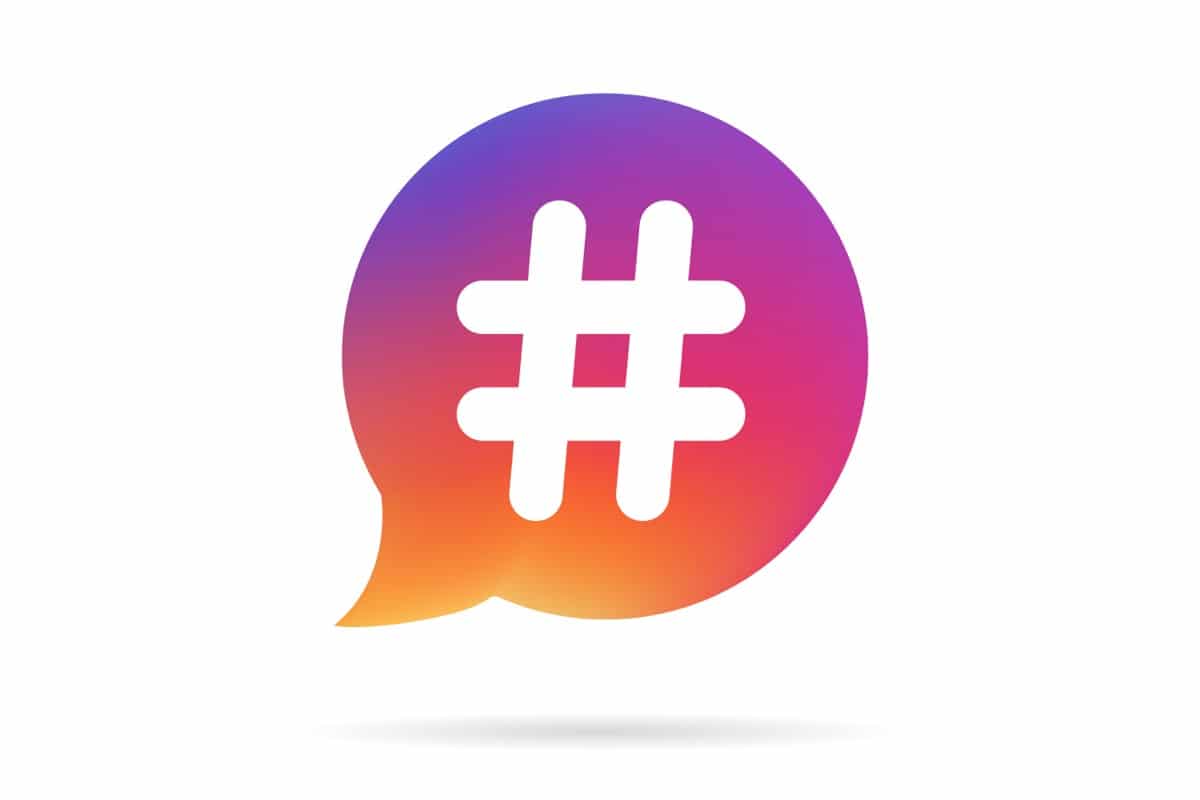
The power of social media marketing is no longer a secret. Companies have been using social media platforms in their digital marketing strategy to reach their target market for many years now, and this trend shows no signs of slowing down. Given the competitive landscape of social media, however, it can still be hard to cut through the competition to reach your audience.
One effective method, and the topic for this article, is using hashtags to build a community on Instagram. While this is actually a relatively simple concept, it can be tricky to execute properly, so we would like to offer some advice in this article to help you get started. With the right hashtags prepared and a plan for how they will be deployed and promoted, you may be able to grow a passionate following on one of the biggest social platforms in the world.
What are Instagram Hashtags?

Hashtags are commonly used around the internet on a variety of platforms, so you are probably familiar with their format. To use a hashtag, you simply type the pound sign—which looks like ‘#’ and has now come to be called a hashtag by the younger generation—followed by the word or phrase that you wish to use. So, if you were adding pictures or videos to an Instagram account that promotes a kitchen business, you might use some of the following hashtags:
#cooking
#easyrecipes
#mealplanning
#homecook
Those are just a few random examples, but you get the idea. Basically, Instagram hashtags are a way to categorize and organize content on the platform. Since it’s a visual platform, filled with millions and millions of photos and videos, Instagram needs a way to know what kinds of content people and businesses are posting. The use of hashtags is an effective way to accomplish that goal.
But hashtags are useful for more than behind-the-scenes organization. They are also an excellent way for users to find the content that you have posted. When someone uses Instagram, they may search specific hashtags that they know are popular and will cover topics they enjoy. To carry our example from above, someone may access Instagram and search ‘#cooking’ to see pictures of delicious meals, get ideas for recipes, and more. If you had posted your content with that hashtag included, you would have a chance to be discovered in those search results.
Picking the Right Hashtags
Choosing the right hashtags to attach to your Instagram post is part art, part science. It will likely take some practice to get this just right for your business, but we can offer some tips here to point you in the right direction.
First, it’s good to think about the different types of hashtags that are seen on Instagram, and how you can use some from each of those buckets to expand your reach.
- Popular tags. These are hashtags that you will see again and again on Instagram across a variety of types of content. They aren’t so much related to what the content is about, as much as they are connected to a particular thing that people like to do on Instagram. Perhaps the best example is Throwback Thursday, which is marked with the hashtag #tbt. A picture or video tagged with #tbt could be about virtually anything, as long as it is a post that references something that happened in the past. As a business, you might choose to use a Throwback Thursday post to show a picture from when you were first getting started, such as the first product you created or the first time you posted to Instagram.
- Industry tags. This is where you will get more specific and try to niche down to find people in your target audience. Our cooking examples above would apply here, but this concept works in any market that has at least a modestly active community on IG. With just a bit of exploring the Instagram platform while looking at other business accounts in your space, you should easily be able to pick up on what hashtags those in the industry tend to use.
- Location tags. If your business is one that serves a specific geographical area, using location tags is a powerful way to weed out people who aren’t in your target market. So, if you were located in Southern California, you could try tags such as #losangeles, #orangecounty, #sandiego, etc. Also, those location tags can be paired with industry tags to further narrow down your reach to just the right audience.
- Brand tags. This is where you use the branding of your business as a hashtag. Most of the time, this is a technique that will only be effective if you are already at least somewhat known in the space. After all, no one is going to search for a brand that they’ve never heard of, so you might want to start deploying this strategy after you have built some traction in your market.
These four categories are not the only options, of course, but they are a good starting point. One of the biggest keys to your success using Instagram hashtags is simply to do some research by following other accounts in your space. Consider making a spreadsheet or using some other tracking method to identify the hashtags that are commonly used by competing businesses. You don’t have to use every tag that they select, of course, but monitoring the use of hashtags in your industry and applying those that are popular or particularly relevant is a good marketing strategy. Remember, trends change quickly online, so staying up to date on popular hashtags will help you find more potential customers.
Building an Interested Audience
It can be fun to play with various hashtags on your posts, but this exercise will only be worthwhile if it helps you to build an audience that pays attention to your brand moving forward. With that in mind, you need to be strategic with which hashtags you choose to use and which you opt to skip.
The key here is to create a clear picture of your ideal customer and then target that person specifically with your chosen hashtags. It’s not all that useful for most businesses to cast a wide net—you want to instead cast a targeted net that is likely to capture people who can turn into ongoing, paying customers. Too many businesses make the mistake of valuing “exposure” with no plan for how they are going to turn that attention into income.
So, our suggestion would be to focus intently on the hashtags that are already used by those in your niche. This is where the community can already be found, so you should start there and try to get involved. Of course, it’s going to take interesting content to ultimately grab attention and earn followers, but using hashtags that are popular in a specific niche will put your posts in front of the right people.
On the flip side, you may want to ignore the bigger hashtags that tend to be popular across Instagram as a whole. Those tags get a lot of attention, but they also include tons of competition and won’t be focused specifically on your target audience. There really isn’t much point in “playing in the deep end” when you can focus your efforts more specifically on finding the people who are most likely to be interested in what you sell.
Executing This Strategy
With a background understanding of hashtags and why they are important in place, let’s get into some of the specifics of how you can execute a hashtag strategy on your Instagram account. First, here are some basic guidelines to get you on the right track:
- You should add hashtags to every post. There is simply no reason to skip out on this opportunity to reach as many people as possible. If you have old posts that are missing hashtags, you could take some time to go back through and add them now.
- There is a limit of thirty hashtags for each post on your account. While thirty sounds like a lot, you might be surprised to find how quickly you can reach that quota. If you run into the limit and find you are having a hard time deciding which tags to keep, prioritize those that are most closely associated with your niche.
- You can add hashtags in the comments. If you have a clear message that you want to deliver in the caption, and you don’t want to distract from it by adding hashtags in that section, you can also leave a comment and add the tags in that area. There isn’t really a benefit of putting the hashtags in one place as compared to the other, so just do what works best for your needs.
- Avoid the copy/paste approach. Once you find a set of hashtags that you like, it may be tempting to just copy and paste that set of tags onto each new post that you add to IG. That’s not a good approach, however. Your content will quickly look like spam to the Instagram algorithm if every single post has the same collection of hashtags. So, while it’s likely that you’ll use some of the same tags over and over, try to customize some of the tags to each specific post so the content is authentic and relevant.
To avoid getting frustrated with the hashtagging process, it’s best to be organized. Before you ever log on to Instagram to add a new post, know what hashtags you are going to use. As mentioned earlier, you might want to build a spreadsheet of popular tags in your niche that you can reference and set up a system to track how often you use each tag. Then, when you load your new picture or video and type a caption, you can simply pick the right tags from your spreadsheet and move on. This part of your social media marketing process shouldn’t be too difficult or time-consuming, as long as you are organized.
Will creating some hashtags and promoting them on your Instagram account immediately lead to a massive boost in sales? Probably not – but that’s not the case for any kind of promotional effort. The goal here isn’t an overnight success story so much as it is to gradually build traction and expand your reach. With consistent effort, you can turn your Instagram presence into an important business asset that can serve your organization well for years to come. Get started today!
Most Popular Articles

Seeing Favicons in Your Google Search Results? Here’s Why…
Have you noticed anything different in your Google Search results lately? Google added tiny favicon icons to its organic search results in January. It was…

Business Growth and Digital Marketing News & Tips 11-17-24
Are you encouraging and rewarding innovation? Lee Cockerell is the former Executive Vice President of Operations at Walt Disney World. A lover of traditional red…

Business Growth and Digital Marketing News & Tips 11-27-24
A culture of gratitude "Feeling gratitude and not expressing it is like wrapping a present and not giving it." – William Arthur Ward Beyond being…








